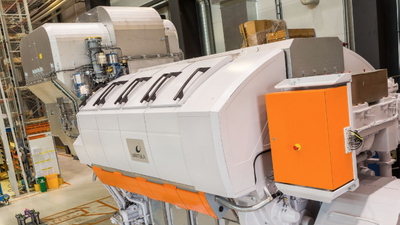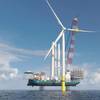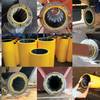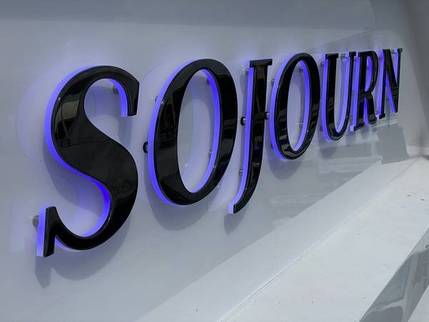Operational Study: Methane Slip Varies with Engine Load
The Transport Emission Control Team at VTT Technical Research Centre of Finland has released a study of methane slip and other emissions from an LNG-powered marine engine operating under real-life conditions.
The now published study ‘Methane slip and other emissions from newbuild LNG engine under real-world operation of a state-of-the art cruise ship' details the results of a study conducted on the newbuild cruise ship MSC World Europa. One of its five engines, a Wartsila 46DF, 14-cylinder, 600 rpm 4-stroke low-pressure dual-fuel engine, was operated on LNG fuel for one week as it sailed the Mediterranean.
The findings from the study include:
• The methane slip from the newly built engine was found to vary according to engine load, from 2.3-3.0 g/kWh high engine loads of 50-80% to 21 g/kWh at 12% load, positioning it at the lower end of values reported in the literature.
• Reduction: At load conditions of 50% and above, low methane slip values resulted in a 13-15% lower total CO2 equivalent emissions with LNG compared to MGO (Marine Gas Oil). However, at lower load conditions, the situation is reversed.
• Analysis of the vessel's engine load profile over eight months revealed that the majority of the vessel's operation time (~90%) occurred at engine loads higher than 40%. This indicates that the operational pattern of the engine can contribute to methane reduction efforts.
• Based on the real-world load profile, the study developed a weighted emission factor for methane, resulting in 2.8 g/kWh for the specific ship. This represents 45% lower methane slip compared to the default value from FuelEU Maritime regulation.
• LNG combustion resulted in higher formaldehyde emissions compared to MGO, but reduction in formaldehyde levels was observed over the SCR catalyst present in the exhaust line of the dual-fuel engine, without urea injection, suggesting it may provide a pathway for formaldehyde mitigation.
• LNG use reduced particle mass by 87–93% and black carbon by 94–99% compared to MGO combustion.
• When total GHG emissions, including CO2 and black carbon were considered, LNG use resulted in 13–15% lower GHG at high loads, but the benefit was undermined by the escaping methane at low load conditions.
The study comes as part of the Green Ray project, coordinated by VTT Technical Research Centre of Finland and including Chantiers de l’Atlantique, CMA Ships, Wärtsilä, Shell, DNV, the Finnish Meteorological Institute, MSC Cruises Management and REVOLVE.
The five-year project, beginning in June 2022, has received a total grant of €7 million from the European Commission within the new Horizon Europe research and innovation program, addressing the topic of “Assessing and preventing methane slip from LNG engines in all conditions within both existing and new vessels (ZEWT Partnership).”











